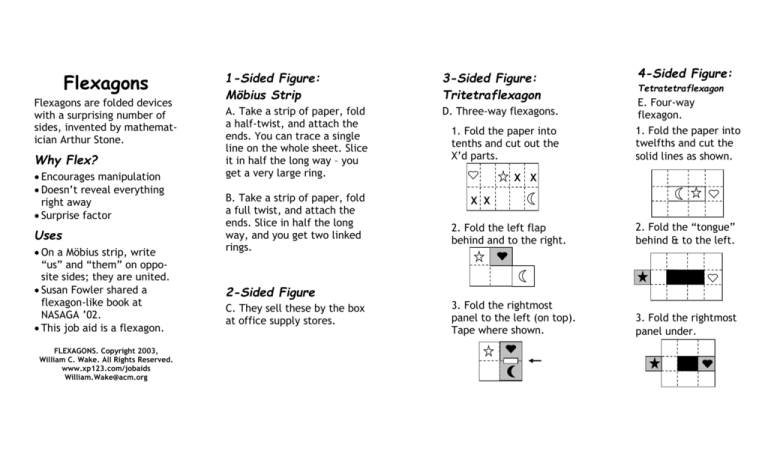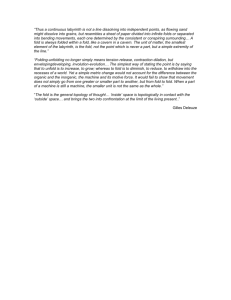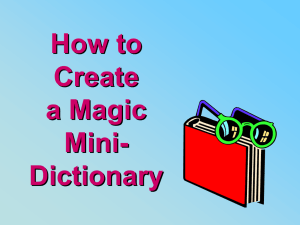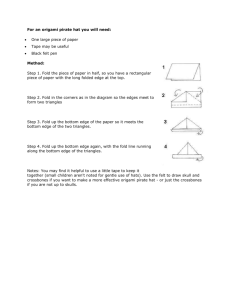
Flexagons
Flexagons are folded devices
with a surprising number of
sides, invented by mathematician Arthur Stone.
Why Flex?
Encourages manipulation
Doesn’t reveal everything
right away
Surprise factor
Uses
On a Möbius strip, write
“us” and “them” on opposite sides; they are united.
Susan Fowler shared a
flexagon-like book at
NASAGA ’02.
This job aid is a flexagon.
FLEXAGONS. Copyright 2003,
William C. Wake. All Rights Reserved.
www.xp123.com/jobaids
William.Wake@acm.org
1-Sided Figure:
Möbius Strip
3-Sided Figure:
Tritetraflexagon
A. Take a strip of paper, fold
a half-twist, and attach the
ends. You can trace a single
line on the whole sheet. Slice
it in half the long way – you
get a very large ring.
D. Three-way flexagons.
B. Take a strip of paper, fold
a full twist, and attach the
ends. Slice in half the long
way, and you get two linked
rings.
2-Sided Figure
C. They sell these by the box
at office supply stores.
1. Fold the paper into
tenths and cut out the
X’d parts.
4-Sided Figure:
Tetratetraflexagon
E. Four-way
flexagon.
1. Fold the paper into
twelfths and cut the
solid lines as shown.
X X
X X
2. Fold the left flap
behind and to the right.
2. Fold the “tongue”
behind & to the left.
3. Fold the rightmost
panel to the left (on top).
Tape where shown.
3. Fold the rightmost
panel under.
A couple variations
The height of the tongue
doesn’t matter. (The paper
must be divided into
quarters, but the “thirds”
needn’t be equal.)
You can have more than one
tongue.
You can cut out the tongue
(leaving a slit), and use
ribbon instead. (Make the
slit a little wider than the
ribbon.)
6-Sided Figure:
Hexaflexagon
F. Hexaflexagon—
See Martin Gardner’s book.
Relatives
Magic Wallet – magically
moves dollar from side to
side.
Jacob’s Ladder – makes a
waterfall as tiles cascade.
Mapping
Resources
Google search for “flexagon”
Hexaflexagons and Other
Mathematical Diversions,
Martin Gardner. U. of Chicago
Press, 1988.
“Tetraflexagons,” in The
Second Scientific American
Book of Mathematical Puzzles
and Diversions, Martin Gardner. U. of Chicago Press, 1987.
home.xnet.com/~aak/
hexahexa.html
www.kathrynhuxtable.org/
cgi-bin/home/flexagon/
hexahexa.shtml
www.drking.worldonline.co.uk/
hexagons/flexagons/
www.sherston.freeserve.co.uk/
HTML/Mathematics/
Flexagons.htm
4. Fold tongue and
leftmost panel to the
right. Slip tongue
beneath the rightmost
panel.
Work your way
through the
flexagon, labeling
each face.
Create a diagram
showing moves
from face to face.
A
5. Tape along the edge
as indicated (middle
section only).
B
C
Tritetraflexagon
A
C
B
Triangle
(Stoplight!)






